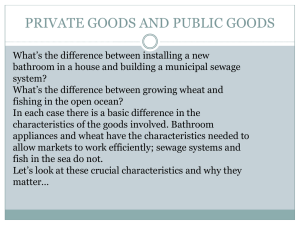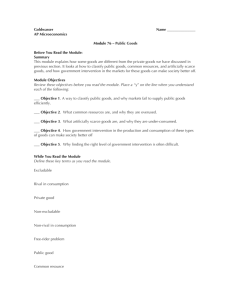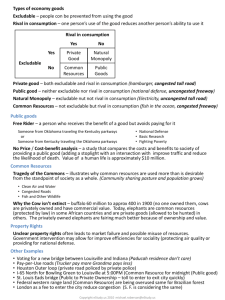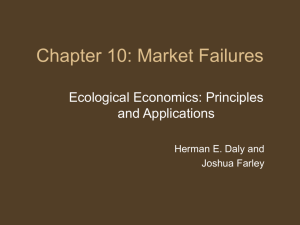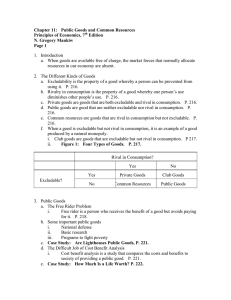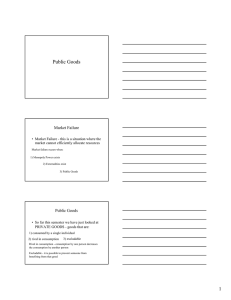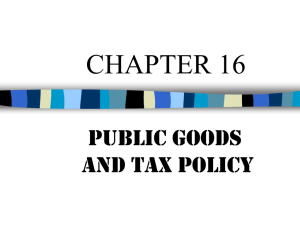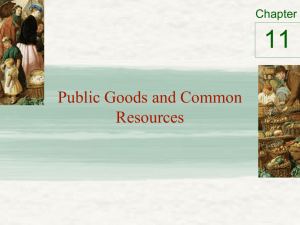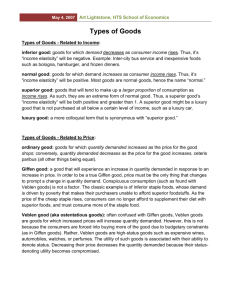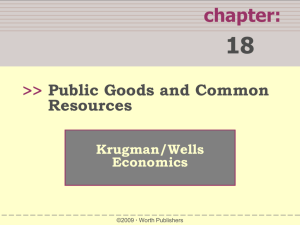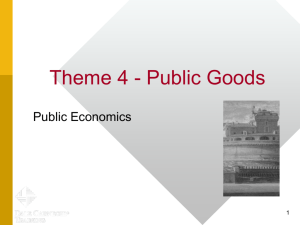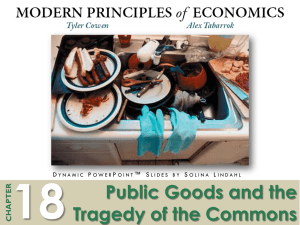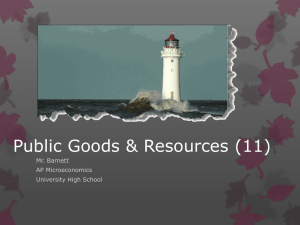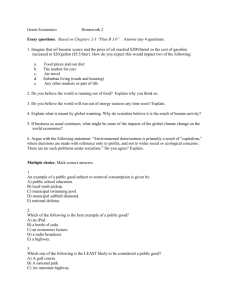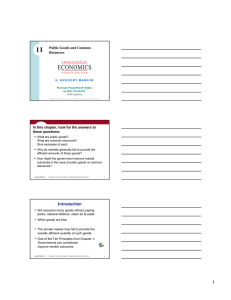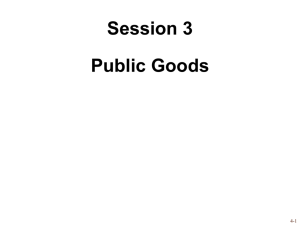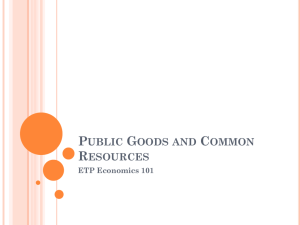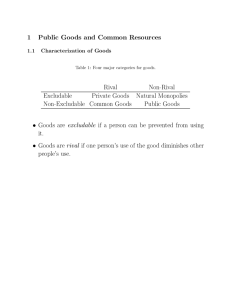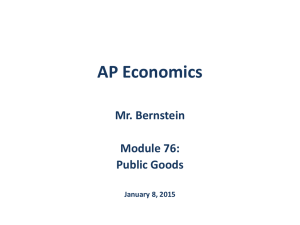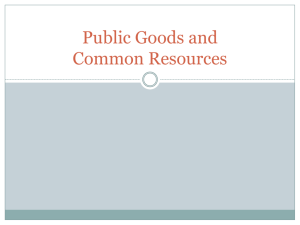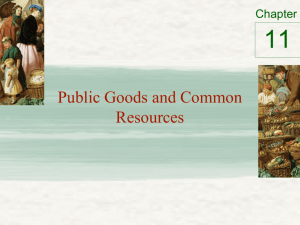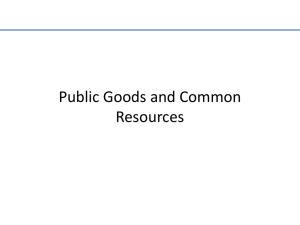AP Micro/Wolters
advertisement
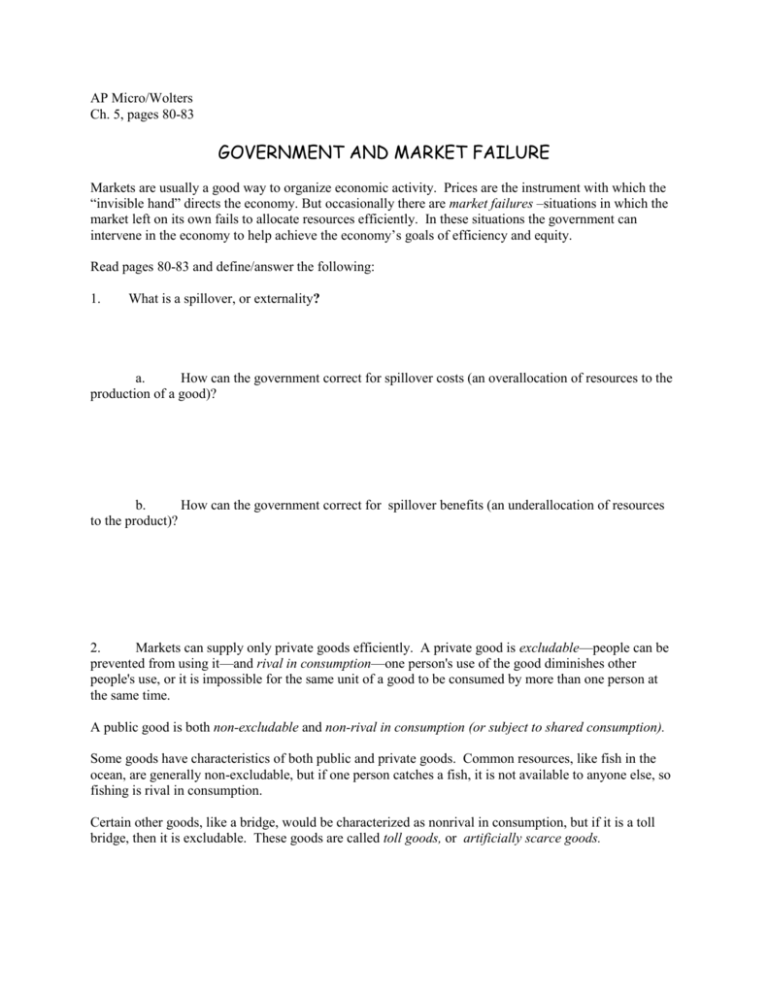
AP Micro/Wolters Ch. 5, pages 80-83 GOVERNMENT AND MARKET FAILURE Markets are usually a good way to organize economic activity. Prices are the instrument with which the “invisible hand” directs the economy. But occasionally there are market failures –situations in which the market left on its own fails to allocate resources efficiently. In these situations the government can intervene in the economy to help achieve the economy’s goals of efficiency and equity. Read pages 80-83 and define/answer the following: 1. What is a spillover, or externality? a. How can the government correct for spillover costs (an overallocation of resources to the production of a good)? b. How can the government correct for spillover benefits (an underallocation of resources to the product)? 2. Markets can supply only private goods efficiently. A private good is excludable—people can be prevented from using it—and rival in consumption—one person's use of the good diminishes other people's use, or it is impossible for the same unit of a good to be consumed by more than one person at the same time. A public good is both non-excludable and non-rival in consumption (or subject to shared consumption). Some goods have characteristics of both public and private goods. Common resources, like fish in the ocean, are generally non-excludable, but if one person catches a fish, it is not available to anyone else, so fishing is rival in consumption. Certain other goods, like a bridge, would be characterized as nonrival in consumption, but if it is a toll bridge, then it is excludable. These goods are called toll goods, or artificially scarce goods. The following chart depicts four types of goods—public, private, common resources, and artificially scarce goods (nonrival, but excludable). Place each of the goods/services listed below into the appropriate box: 1. 2. 3. 4. 5. 6. 7. haircut wheat pay-per-view movies street lights toll roads police and fire protection clean water Rival in Consumption Nonrival in consumption PRIVATE GOODS ARTIFICALLY SCARCE GOODS COMMON RESOURCES PUBLIC GOODS Excludable Nonexcludable 3. What is the free-rider problem? 4. What is a quasi-public good or service? 5. How does the government reallocate resources from private to public goods?
